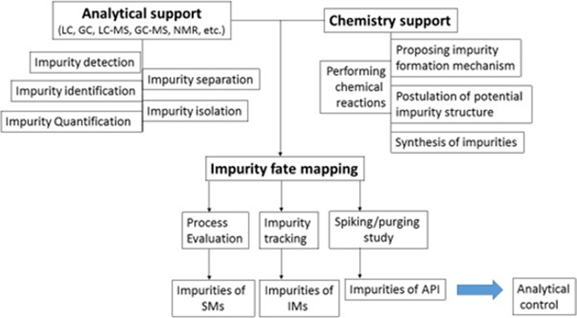Abstract
Impurity profiling is known to identify, classify and measure both the identified and non-identified contamination present on the medicinal product. Unwanted chemicals which remain or are created during the formulation of medicinal products are pharmaceutical impurities. Impurity profiling helps in the detection, recognition and quantification in bulk products and pharmaceutical formulations of various types of impurities, as well as residual solvents. It is the simplest way to distinguish consistency and stability of bulk drugs and medication formulations. As analytical methodology has developed rapidly, it is essential to consider with their solutions problems related to impurities of drug substances and drug products. Various regulatory agencies including ICH, USFDA, Canadian Drug and Health Agencies stress the criteria for purity and for detecting impurities in active pharmaceutical materials, even in small quantities, as the presence of impurities, may have an effect on pharmaceutical products ’ efficacy and health. Therefore, the study focuses on various analytical methods for identification and quantification of impurities in pharmaceutical products to clarify the need for impurity profiling on drug products in pharmaceutical research. To drug regulators, the product substance’s impurity profile is a reliable fingerprint to prove that the manufacturing process of bulk drug substances is consistent in quality. The study gives a short summary of recent technical developments in the profiling of pharmaceutical products including pharmaceutical active ingredients as well as pharmaceutical products during 2013-2017. This focuses specifically on a thorough update on various analytical techniques, including hyphenated methods to define and measure thresholds in specific pharmaceutical matrices of impurities and degradants.
Full text article
Authors

This work is licensed under a Creative Commons Attribution-NonCommercial-NoDerivatives 4.0 International License.

